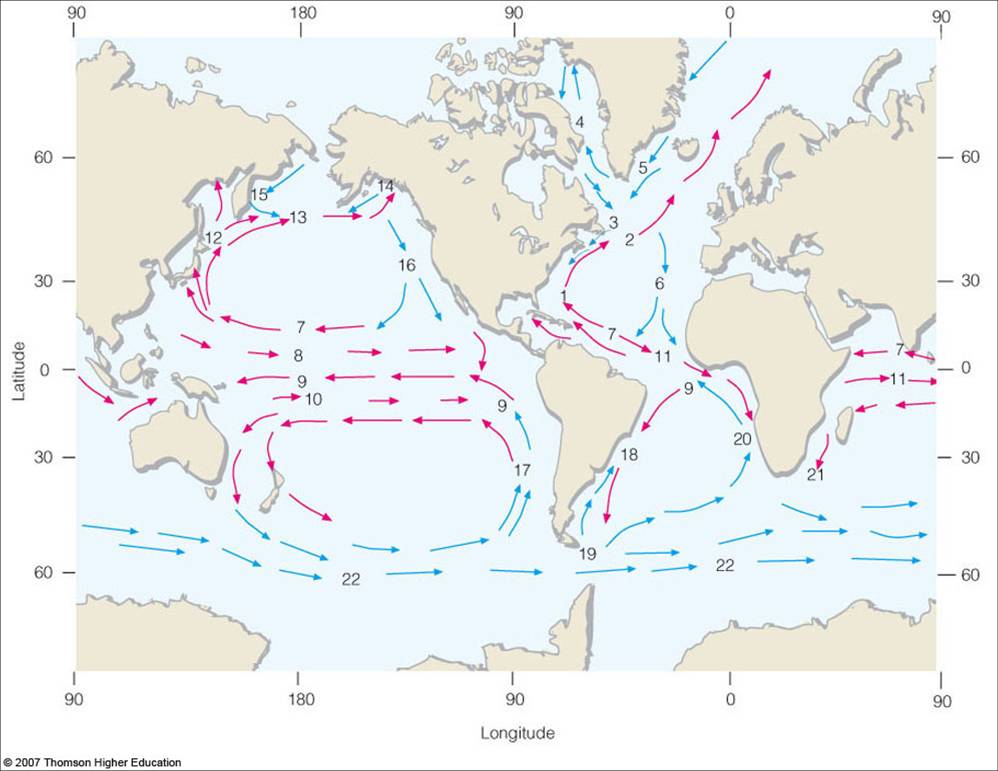Ocean Currents
- largely generated by wind- gyres
- account for about 40% of global
heat transport

- water moves at 20-45 degree angle to wind dir due to coriolis force
- move slower than winds - several km/day - km/hr
- Major Ocean Currents:
- 1- gulf stream - check out the current position
of the gulf stream:

- 3- laborador current
- 7- north equatorial current
- 8- north equatorial. counter current
- 9- south equatorial current
- 10- south equatorial counter current
- 11- equatorial counter current
- 12- kuroshio current
- 14- Alaska current
- 16- California current

- (http://apollo.lsc.vsc.edu/classes/met130/notes/chapter10/ocean_currents.html)
WINDS:
Ocean in Motion: Currents - Characteristics
Driven by forces such as wind, tides, and gravity, currents keep our oceans in constant motion. Currents move large amounts of water great distances. Countless currents have been named, but the seven major ones are the West Wind Drift (or the Antarctic Circumpolar Current), East Wind Drift, the North and South Equatorial currents, the Peru Current, the Kuroshio Current and the Gulf Stream. These currents flow in large rotating loops called gyres. In the Northern Hemisphere, gyres spin in a clockwise direction, and in the Southern Hemisphere, gyres spin in a counterclockwise direction. This is because of Earth's spinning rotation and is called the Coriolis Effect.Two of the largest currents are the Antarctic Circumpolar Current and the Kuroshio Current. The Antarctic Circumpolar Current, sometimes called the West Wind Drift, circles eastward around Antarctica. The Kuroshio Current, which is located just off Japan's coast, travels up to 75 miles a day at a speed of up to 3 miles per hour.
The Gulf Stream is a current with a strong influence on the East Coast of the United States. Actually, the Gulf Stream is part of a larger current system, which includes the North Atlantic Current, the Canary Current and the North Equatorial Current. From the Yucatan Peninsula in Mexico, the Gulf Stream flows north through the Straits of Florida and along Florida's East Coast. When it reaches North Carolina, around Cape Hatteras, it begins to drift off into the North Atlantic towards the Grand Banks near Newfoundland. The Gulf Stream usually travels at a speed of 3 or 4 knots.
- (http://www.onr.navy.mil/focus/ocean/motion/currents1.htm)

No comments:
Post a Comment